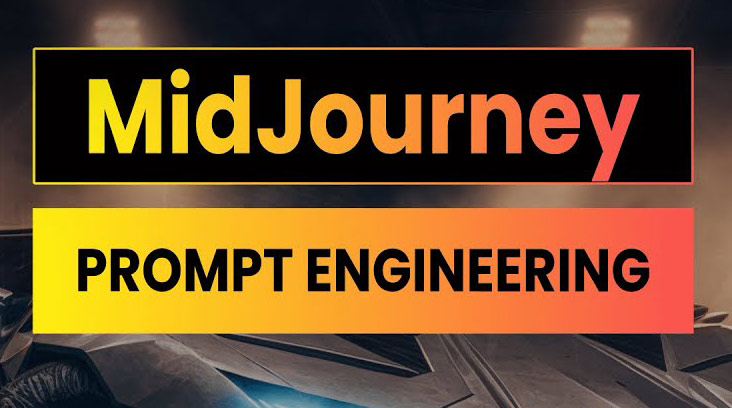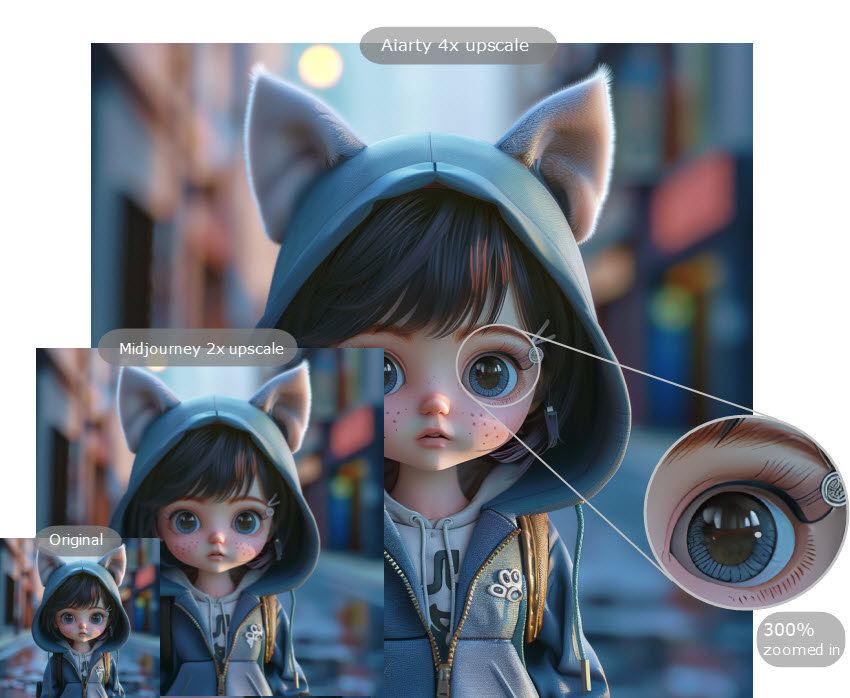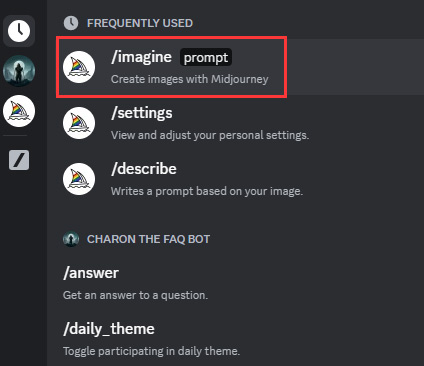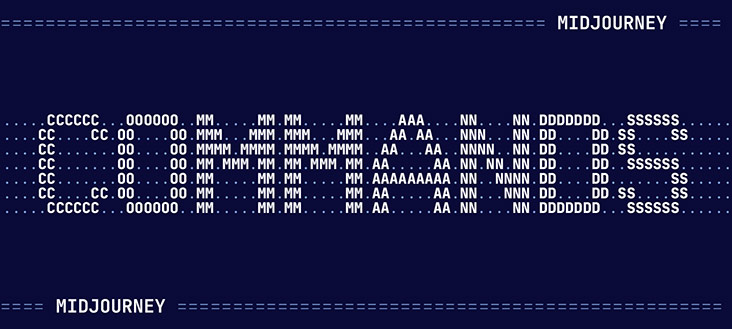What is AI Midjourney Prompt Engineering?
Updated on
The world-renowned text-to-image AI generative tool - Midjourney allows you to easily create computer generated images (CGI) via a simple chat window based on artificial intelligence. Just type a description of what you want, and this AI art generator tool will create an image for you.
Until now, Midjourney has 16+ million users already. They have used AI Midjourney to create AI arts, but some of them still don't know what is AI Midjourney prompt engineering and how does AI Midjourney work? That's why this article exists. It will demystify the meaning of Midjourney prompt engineering, how it works and the most useful Midjourney prompts.
Part 1. What is AI Midjourney Prompt Engineering?
As a matter of common sense, the AI-generative tools don't quite speak our human natural language. Instead, the AI art generation tools like Midjourney understand our prompts via language models (Deep Learning algorithms).
Prompt Engineering mixes AI and Natural Language Processing. It plays a role as a bridge between your words and the AI's image library. It trains the language model to understand your instructions by connecting them to a massive database of images. This way, the AI can learn to choose the most fitting image based on your prompt and analyze which prompts lead to the kind of results you desire.

And Midjourney prompt engineering is how users create and craft image, image URL or text instructions to get decent AI-generated images from this language model. And when you combine programming and creativity, you arrive at prompt engineering.
Midjourney's Raw mode produces decent, but Midjourney is still struggling with image blur and the resolution is capped at 1024K. Instead of wasting time upscaling to 2048k with blur issue using its Subtle or Creative Upscale,why not resorting to a professional AI image enhancer such as Aiarty Image Enhancer to deblur, denoise and upscale Midjourney image to 4K/8K and beyond with fidelity and sharpness kept.

Aiarty Image Enhancer - Optimized for AI arts created by Midjourney/Stable Diffusion.
- Upscale image to 4k while filling missing pixels with more detail.
- Auto infer, deblur, denoise, generate details, and upscale image.
- Batch process supported. 6.78 million images trained.
- 2 mins only to upscale 100 images from 1024p to 2048p.
Part 2. How does Midjourney Prompt Engineering Work?
The Midjourney prompt engineering can't successfully analyze characters without Deep Learning algorithms. The procedure needs the participation of Deep Learning algorithms and Large Language Models (aka. LLMs).
Firstly, you type and enter your text instructions. Then, Midjourney uses artificial intelligence to analyze existing code and predict what kind of programming language might be best suited for a specific task. It can even generate some basic code itself, based on what it learns from the data. Once the analyzing system recognizes your code, the AI identifies recurring patterns. It then uses these patterns to scour the web for resources that might be helpful, like websites or apps that align with your project's predicted direction.
Part 3. Main Principles of Midjourney Prompt Engineering
Principles not only exist in your daily life. They're everywhere, Midjourney prompt engineering included, as well. Some of the major ones would be:
1. Guide the model towards success. This principle emphasizes on providing clear instructions to the AI model about the desired outcome. This helps the model focus its search and kickstarts the development process in the right direction.
2. Explore options. Here, developers benefit by testing the model with a variety of prompts phrased differently. This helps them gauge the model's flexibility and understand how it responds to different wording. It's like creating a spectrum of prompts to see how the model reacts across the range.
3. Focus on user needs. This principle prioritizes understanding user interaction. By clearly outlining the tasks involved, developers can assess whether the model is addressing all the user's needs and if the process will achieve its intended goals. It's about ensuring the model is built to solve the right problems for users.
Part 4. Main Commands of AI Midjourney
There, normally, you're prone to unleash your creativity with AI Midjourney (or other similar AI art generator tools). This part provides a shortcut, outlining the most effective prompts to get you started quickly. Let's bypass the learning curve and dive right into making amazing art!
First things first, the most significant command in Midjourney goes to /imagine prompt. The prompt is where you will describe your image and add flags etc. I recommend crafting prompts in this formula:
describe the image, describe the background, styles, --flags

Here "styles" in MJ covers a one-page list of styles for you to choose from. I've compiled some of them which I find useful for MJ AI art generation in most cases. You can simply add as many of these as you want on separated by commas.
Midjourney styles: painting, drawing, sketch, oil on canvas, fantasy, graffiti, watercolor painting, ink, pencil art, cinematic lighting, cartoon, vintage, black and white, cyberpunk, 8K...

Be noted that an image URL is also allowed to insert into the prompt if you want to create a variation on an existing image. Give it a shot if needed.
- /image: generate an image based on your text prompts, more specific, more details.
- /private: set your prompts to private to protect your personal privacy.
- no: parameters for elements to be removed from the image.
- stylize: lower value means more qualifications on prompt; inversely, higher value gives more freedom to your prompt.
- /describe: ask Midjourney to create an AI art based on the image you upload or text instructions.
- /image prompt: CGI image is created according to the image URL and based on the text.
- aspect: tell Midjourney the image aspect ratio you want.
- --v 4: initiate a specific version of Midjourney.
- --q 2: twice the quality twice the cost/time.
- --uplight: upscale your AI art without adding additional detail.

On top of these commands, if you want to generate a specific style of art, you can directly specify that, like Midjourney photorealistic prompt, Midjourney portrait prompts, logo design, cartoon style, Japanese anime style, etc. Give full play to your creativity in Midjourney AI image creation.
Some Midjourney users point out that certain Midjourney generated images are blurry, and some are noisy or losing details after exporting. In such case, you need a professional AI image enhancer like Aiarty Image Enhancer to deblur your flawed images via Smooth mode, remove noise from pictures or restore original photo via Real-Photo mode, and generate more details for your skin/fur/feather images to make it more clear and sharp via its More-Detail mode.
It can also AI enhance your Midjourney generated images up to 4X/8X, reaching 32K high resolution for your later poster/flyer printing, photography, commercial presentation or social sharing. Give it a try to perfect your Midjourney AI arts!
In essence, crafting effective prompts is the key to unlocking Midjourney's full potential. Move beyond simple descriptions and delve into details – weave rich imagery, artistic styles, and desired moods. Specify colors, lighting, and composition to guide the AI. Embrace experimentation, as Midjourney flourishes on unconventional combinations. By mastering these elements, you'll transition from a Midjourney user to a prompt engineer, wielding the AI's power to sculpt your imagination into breathtaking visuals.